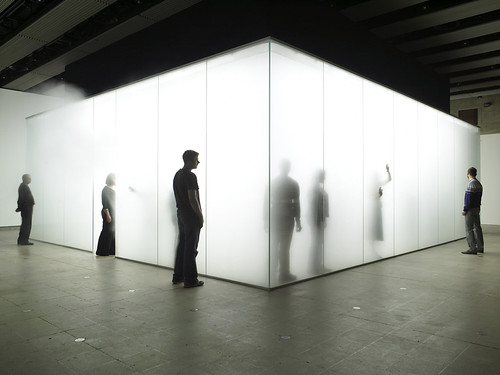.jpg) There are people in the world who spend much of their time conjuring up geometric forms no one has used before. One such person is my previously-mentioned friend, Einar Thorsteinn, whose configurations often appear in Olafur Eliasson’s work. Einar just sent me these photos (click to enlarge) of himself in Olafur’s studio, working with one of his latest, which has the working title of “MoMA Joint” because it’s intended for use in Olafur’s upcoming survey exhibition at the Museum of Modern Art. Einar suggests that the stackable form can have other, more practical applications, such as being cast in concrete for the walls of a house, where the openings could become windows.
There are people in the world who spend much of their time conjuring up geometric forms no one has used before. One such person is my previously-mentioned friend, Einar Thorsteinn, whose configurations often appear in Olafur Eliasson’s work. Einar just sent me these photos (click to enlarge) of himself in Olafur’s studio, working with one of his latest, which has the working title of “MoMA Joint” because it’s intended for use in Olafur’s upcoming survey exhibition at the Museum of Modern Art. Einar suggests that the stackable form can have other, more practical applications, such as being cast in concrete for the walls of a house, where the openings could become windows. The level of rigor Einar contributes to Olafur's work was what I found lacking in the wire sculptures in Antony Gormley’s recent show at Sean Kelly (up through December 1st). I want to like Gormley’s work because I’ve never forgotten the first piece I saw of his in 1991--entitled Field, it consisted of 35,000 handmade clay figures assembled on the gallery floor, all of whom seemed to be beseeching me. With overtones of war and poverty—even though those issues weren’t addressed directly, or perhaps because they weren’t—it was quite moving.





No comments:
Post a Comment